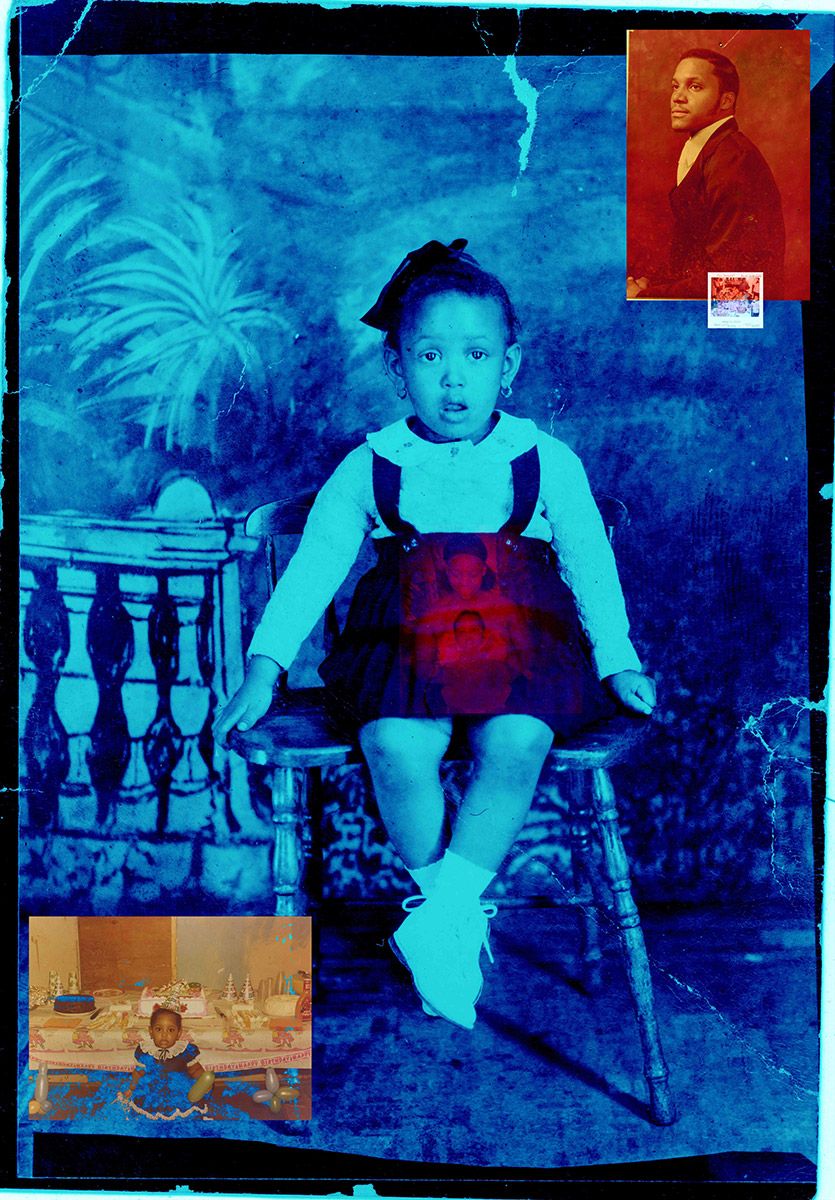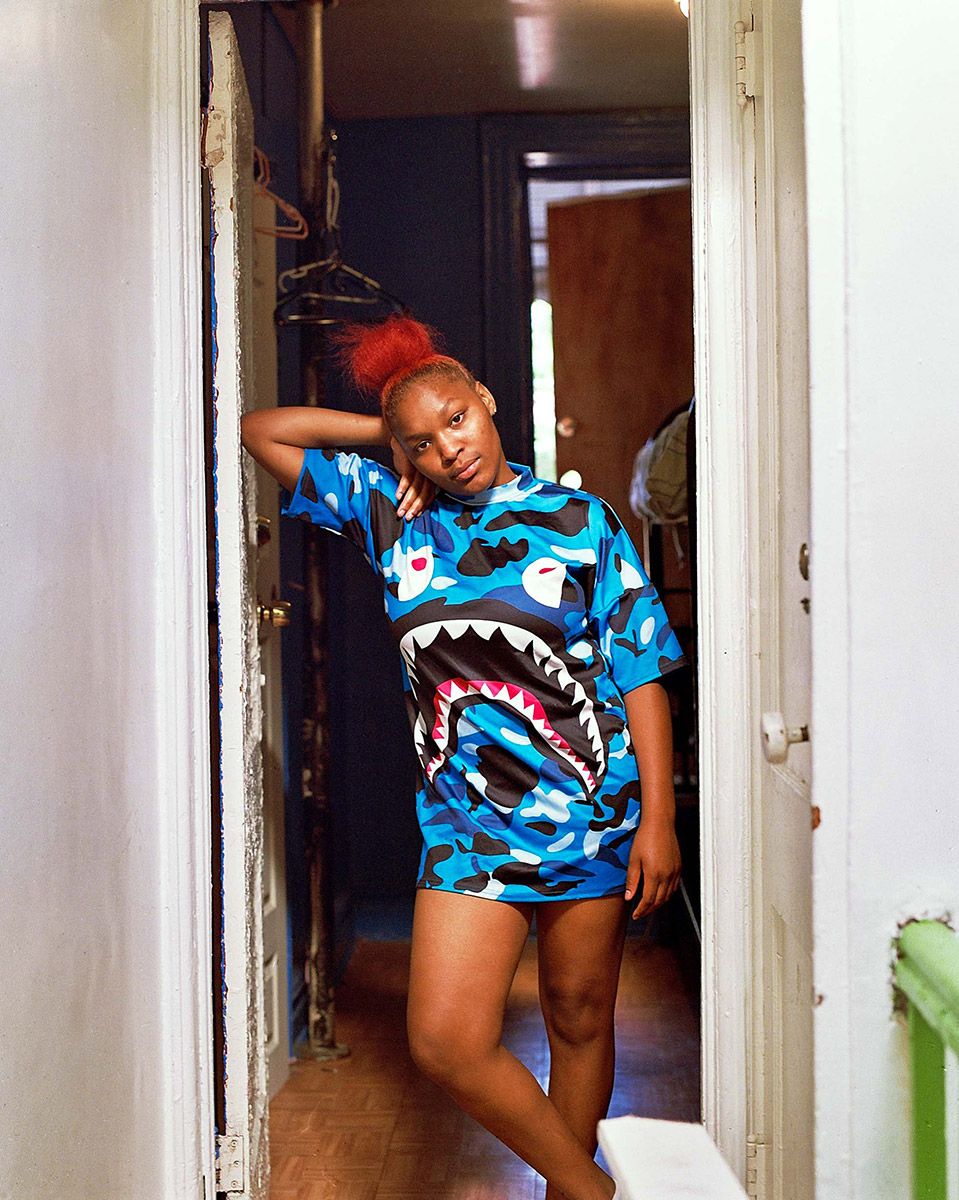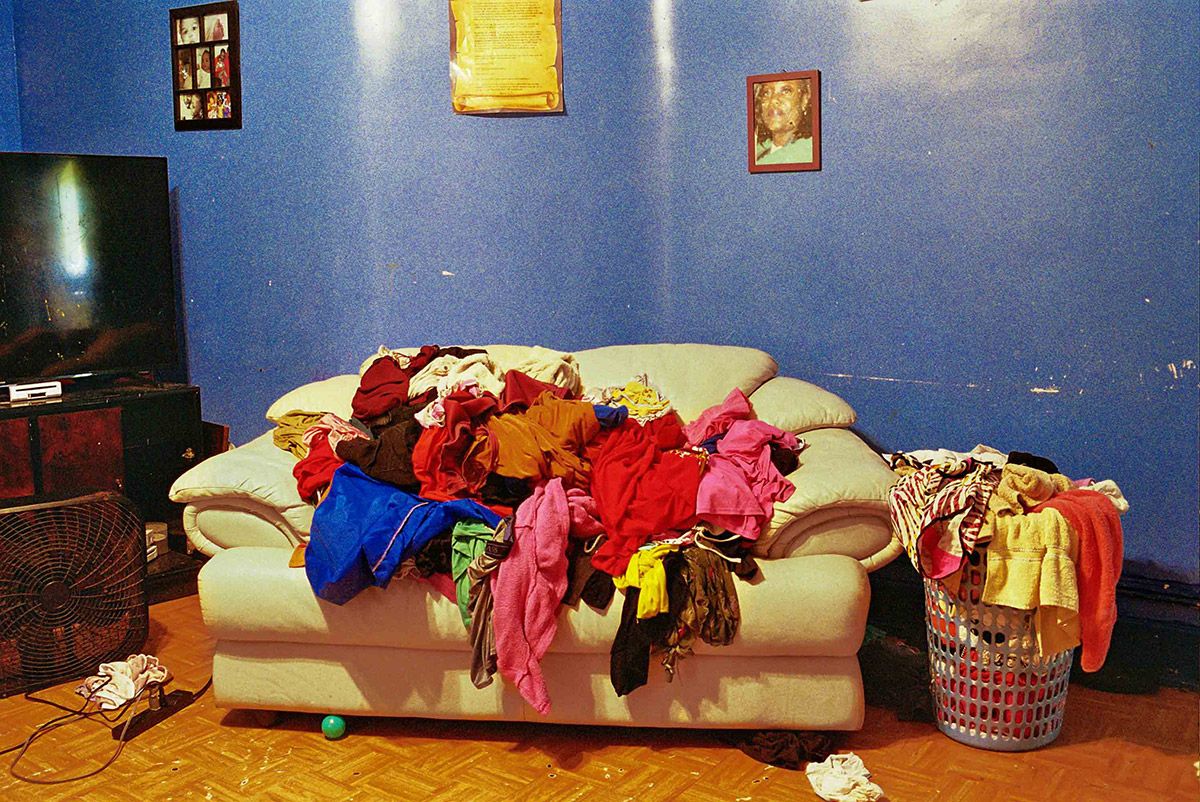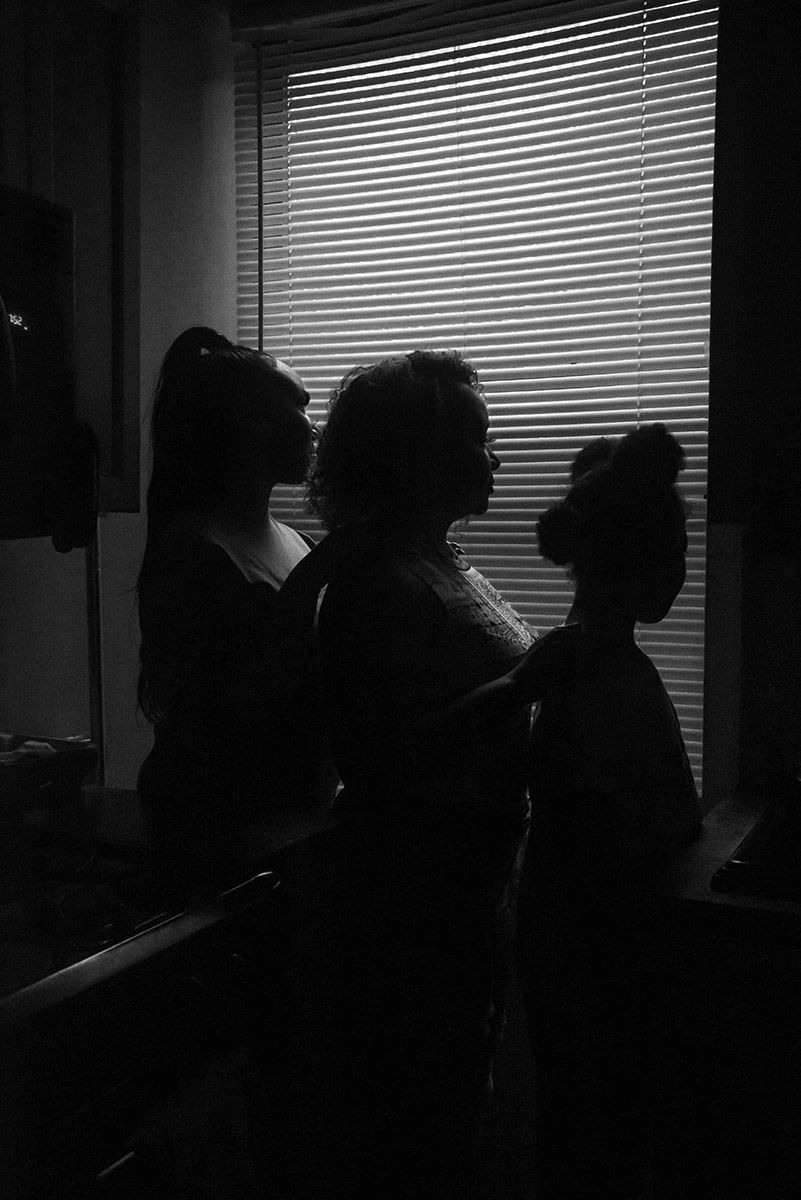blog
Interview with featured photographer Semaj Campbell

Lineage, 2022
F-Stop Magazine: The current issue of F-Stop Magazine includes images from your work “Five Sixty Four,” can you tell us about this project?
Frazier, specifically ‘The Notion of Family’ project. The way Frazier used the camera as a tool to navigate intimate spaces and moments within her home, while also addressing broader social issues in American society, moved me and prompted me to reflect on my own family dynamic.Prior to discovering Frazier’s work, I had never considered my family as part of my artistic practice or within the context of art in general. The concept of ‘Five Sixty-Four’ originates from my childhood home at 564 Wyona Street in Brooklyn, New York (East New York). This is where my great-grandmother purchased her first home after the murder of her husband and raised her six children, eventually remarrying. In a way, that house and neighborhood serve as a homestead for our family, as nearly everyone in my family has resided there at some point in their lives.The project investigates a multitude of themes, but at its heart, I intend for it to examine unresolved generational traumas in low socioeconomic communities, while illustrating a raw and sincere narrative of loved ones who have and still are grappling with the disparaging effects.
Semaj Campbell: How does this project relate or differ from your other work that appears to be set up in a studio?
I believe that, in some ways, my studio work transcends into this project, whether through posing techniques or utilizing the subject’s environment as the backdrop to capture the narrative I aim for. This project presents unique challenges, such as shooting in low-light conditions without off-camera flash, setting up the intimate spaces I shoot in, and deciding which elements should or should not be included in the frame.In my studio practice, I typically approach photoshoots with several poses in mind for the subject and a clear direction of how I want the shoot to unfold. However, with this project, there was a greater reliance on intuition when composing the frame, involving more natural poses and gestures from my subjects with minimal control from me. Whether it’s a studio-based project or photographing family, one thing I value most is trust between me and my subjects. I want them to feel comfortable enough to trust me with taking their portrait because this ultimately leads to a stronger image when that connection is established

Lejohnae, 2020

Living Room Couch, 2020

Daddy’s Girl, 2021
F-Stop: What is your process for making these images or your creative process more generally?
SC: Generally, when asked this question, I struggle to provide a clear-cut answer. I feel that there isn’t a consistent, clear creative process for me, as there might be for some other artists. Oftentimes, my work emerges from the process of observing my day-to-day life. I believe my work is heavily influenced by what I am absorbing visually, aurally, and ultimately, mentally.For instance, I recently conducted a photoshoot with a theme based around the aesthetics of the late, great singer Aaliyah. This was not commissioned work in any way; it was a photoshoot that I took the initiative to conduct. I’m not entirely sure why I decided to pursue the shoot, but perhaps it was because I was listening to her music at the time and felt moved and inspired by her work and legacy. While I may not have a clear reason, I was very pleased with how the photos turned out.Furthermore, the core of my work and process is not rooted in “being different” or creating something that “hasn’t been done before.” Quite frankly, most things have been done before in some shape or form, and each artist contributes their perspective. My process of image-making is first rooted in creating something that I am ardent about and that pleases me as an artist. I believe this is crucial for artists to prioritize.
F-Stop: What do you hope people experience or feel or understand when they look at your photographs?
SC: The one thing I hope people feel when they look at my work is inspired to find their own medium of expression. I believe that the tool of verbal language fails to fully embody and describe what visual language offers. Even if I articulate all the complexities a visual photograph may present, I cannot fully explain or evoke the emotion or feeling of how or what the photograph is executing. The best I can do is allow the photograph to have a personal interaction with the viewer, in the hope of igniting a sense of inspiration or change.
F-Stop: What makes a “good” photograph to you – for this project specifically (or in general)?
SC: This is a challenging question to answer, and I often receive it from my students. The cliché answer might be, ‘it’s all subjective,’ and in certain respects, I believe this is true. As an educator, I teach students some of the golden technical ‘rules’ of photography, such as the rule of thirds, leading lines, rule of odds, etc. I consider these compositional and photographic principles, along with others, as useful tools to help create strong imagery, but they do not represent the essence of what makes a good photograph. As a photographer, I think a good photograph is one that the photographer puts a considerable amount of effort into. This effort doesn’t have to be directly in the act of shooting the image itself, but in the time they spend meditating on it or in the overall process. Most importantly, it has to evoke that ‘this is the one’ feeling. It must elicit that particular feeling inside the photographer, and the same principle applies for the viewer. It has to move and connect with the viewer in a unique way. The ultimate beauty of it is that each person will have a different encounter with it, whether they like it or not.

Untitled, 2021

Snuggles, 2021
F-Stop: I am curious if you find any parallels between your work in football and your art practice?
SC: As I mentioned previously, my art practice is heavily influenced by my day-to-day life, and football consumes a great amount of my time. Being a football coach has afforded me the opportunity to get to know a lot of great young men and help them accomplish their athletic goals, but it has also enriched my photography. As a defensive coordinator and linebackers coach, I have to be very attentive to small details, just like in photography, to put players in a position to perform at their best.The process of being attentive has also made me aware of certain gestures and movements players make. It could be a subtle gesture a player does as he stands on the sideline waiting to get called in or the movement a linebacker makes as he reads out the run and drops back into his zone coverage. All of these little gestures and movements have made me more attuned to what the human body can do, and I have revamped some of these gestures into some of my photographs.
F-Stop: Are you working on any other projects currently?
SC: Fifty Sixty Four has been my priority recently, but I am currently working on two other series that excite me. One project revolves around collaborating with professional dancers, and another is centered around recontextualizing classical paintings with a contemporary twist through the black gaze
To see more of Semaj Campbell’s work visit F-Stop’s Portfolio 2023 issue and www.semajcampbellphoto.com
Location: Online Type: Featured Photographer, Interview
Events by Location
Post Categories
Tags
- Abstract
- Alternative process
- Architecture
- Artist Talk
- artistic residency
- Biennial
- Black and White
- Book Fair
- Car culture
- Charity
- Childhood
- Children
- Cities
- Collaboration
- Community
- Cyanotype
- Documentary
- Environment
- Event
- Exhibition
- Faith
- Family
- Fashion
- Festival
- Film Review
- Food
- Friendship
- FStop20th
- Gender
- Gun Culture
- Habitat
- Hom
- home
- journal
- Landscapes
- Lecture
- Love
- Masculinity
- Mental Health
- Migration
- Museums
- Music
- Nature
- Night
- nuclear
- p
- photographic residency
- Photomontage
- Plants
- Podcast
- Portraits
- Prairies
- Religion
- River
- Still Life
- Street Photography
- Tourism
- UFO
- Water
- Zine

Leave a Reply